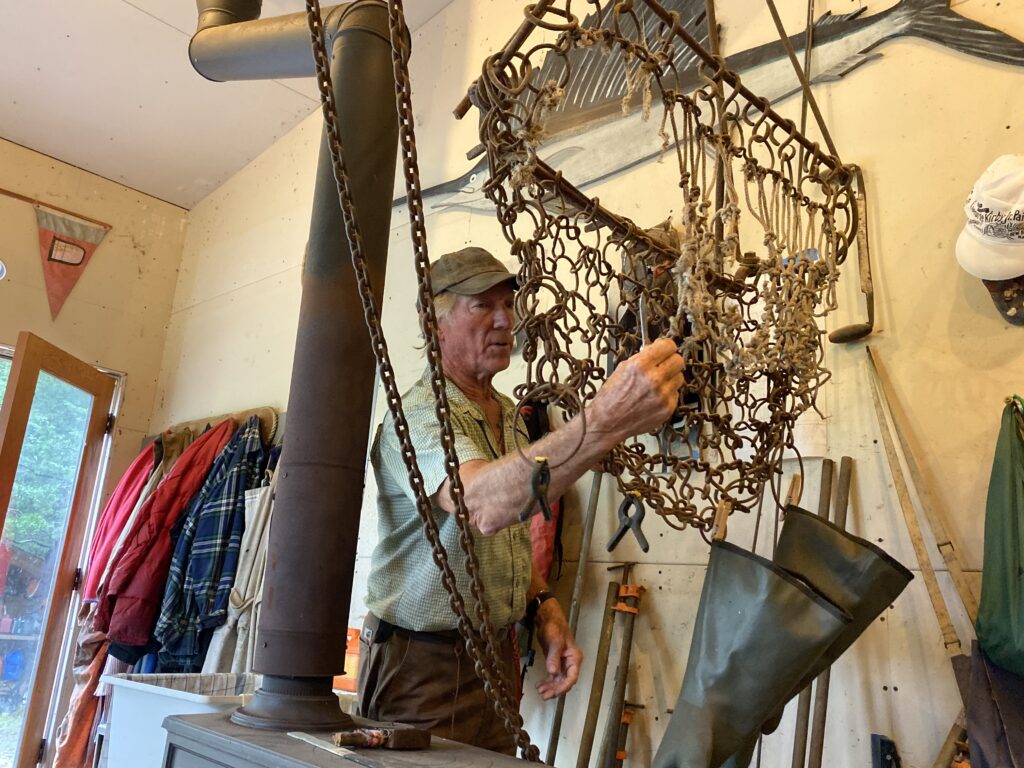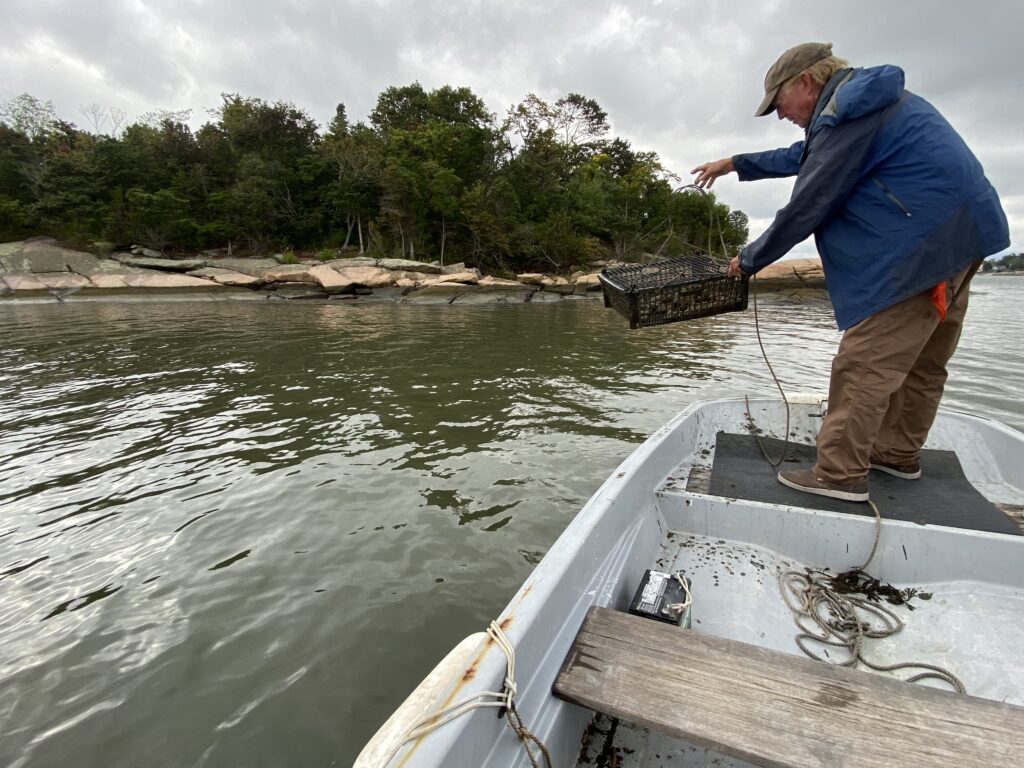GUILFORD – Shellfisherman Kim Granbery chose winding Hoadley Creek to grow seed oysters because of what he calls its exceptional mix of near-pristine salt and fresh water, flowing over a bed of fertile silt deposited for millennia among the Thimble Islands.
“The oysters like brackish water as opposed to higher salinity,” Granbery said on a recent afternoon as he steered his skiff around the rocky islands to check on his underwater crop. “Marine biologists tell me this is one of the cleanest estuaries in the state, and that’s what creates the unique character and taste of these oysters.”
Restoring and improving production of his 5 acres of beds, and the other 3,500 acres of natural oyster and clam beds in Long Island Sound, is the goal of a federally-funded program to help shellfishermen recover from the economic effects of the COVID-19 pandemic and to make the industry more resilient in the long term.

Sales of Connecticut shellfish – including hardshell clams and the increasingly-popular oyster — are estimated at more than $30 million a year.
The nearly $200,000 of grant money will compensate shellfishermen for restoration work on their beds, building on a program launched last year, when widespread restaurant closures led to a 93-percent decline in shellfish sales.
Along with Connecticut Sea Grant, partners in the restoration project include the Connecticut Department of Agriculture’s Bureau of Aquaculture; the NOAA Northeast Fisheries Science Center; commercial and recreational shellfish industry representatives; UConn, and the Connecticut Restaurant Association.
Granbery, who is one of about 30 Connecticut shellfishermen expected to participate, leases a 500-foot stretch of Hoadley Creek from the Town of Guilford for Leetes Island Oysters, a one-man operation. The shellfishing spot had been long dormant before he leased it a few years ago, and is among about 600 acres of natural oyster beds in the Thimble Islands-Stony Creek area.
Granbery uses the creek to grow seed oysters, which are then dug after two years and planted to “finish off” in a nearby bed in Branford, where the water is more saline. At that point, in another year, the oysters are ready for market.
The bulk of the bed restoration work involves dredging the bottoms with a rake-and-net device attached to a boat that overturns old shell and growing oysters buried in the thick layer of silt.

Small seed oysters and more mature specimens are weeded out, and the old empty shell and some seed oysters are deposited back on the bed floor to attract oyster larvae that will attach to the shell and grow.
“I’m pulling up everything and then putting back shell,” Granbery explained, “because a dry oyster shell is the most effective collector for oyster larvae. In this business, we need shell and we need a lot of it.”
But since empty shell is chronically in short supply, part of the Sea Grant funding also will pay to study the viability of an oyster-shell recycling program that would involve collecting empty shells from restaurants to supply oyster farmers like Granbery.
“The vast majority of oysters are consumed at restaurants and on the half-shell,” said Tessa Getchis, aquaculture extension specialist for CT Sea Grant, a UConn-based federal program that is heading the grant project. “Those shells are discarded and end up in landfills – forever lost from the natural beds.”
A particular challenge for the program, said Getchis, is the need to develop methods for cleaning the shell and to prevent any unwanted organisms, such as predators, pests, diseases and harmful algae, from entering Connecticut waters.

Granbery, who was born and raised next to the oyster grounds he now works, said he has been involved in oyster harvesting since 1993. He also designs and restores oyster boats.
He said the growing popularity of eating oysters in recent years has not been matched by a corresponding influx of small harvesters like him, despite his personal recruitment efforts through a local aquaculture initiative in Branford.
“I would like to see 10 to 12 small, sustainable operations operating in the Thimbles as a collaborative, doing what I’m doing,” he said. “This is about improving water quality, it’s about creating jobs, and it’s about feeding people. I’m a traditionalist and I think this should keep going on.”

